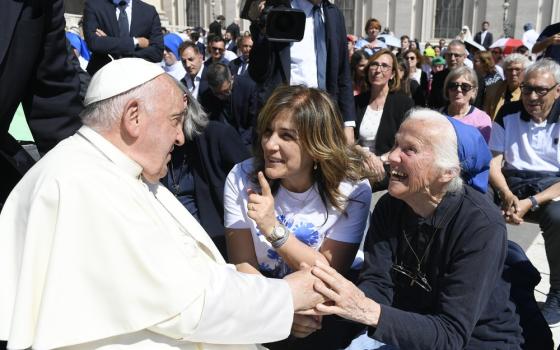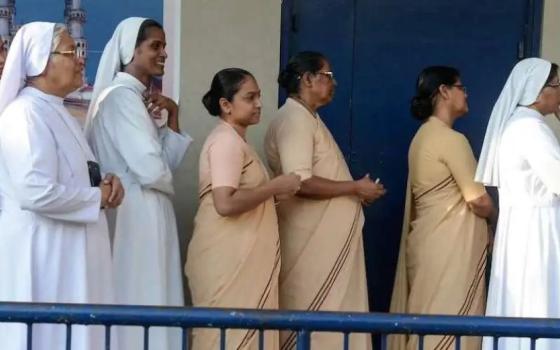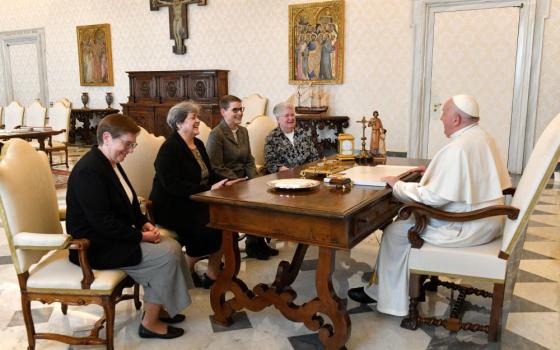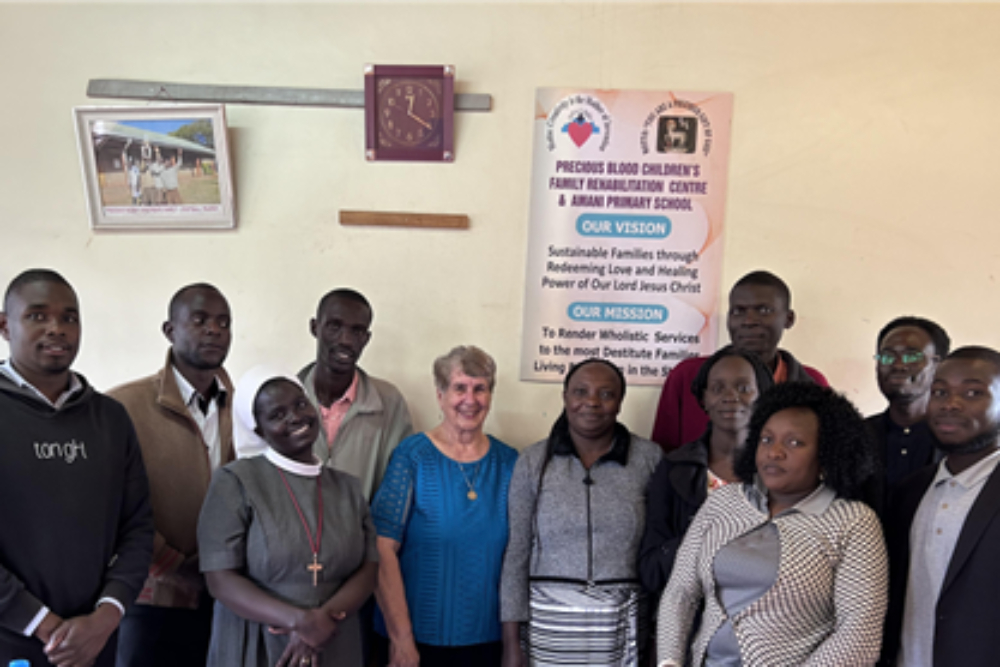
Sr. Caroljean Willie and faculty at Amani School in Riruta, outside of Nairobi, Kenya. (Courtesy of Caroljean Willie)
Recently, I traveled to Kenya in East Africa to offer workshops for teachers on methodologies and tools to enhance their work with students. I was invited by the Missionary Sisters of the Precious Blood (CPS), a community founded by the German Trappist Abbot Francis Pfanner in South Africa, in 1885. I had first met sisters from this community while visiting microfinancing projects in Tanzania, Kenya and Uganda over the past 10 years. In conversation with them, I mentioned that my greatest love was working with teachers in developing countries to help them recognize and utilize the resources in their own countries. I have a Ph.D. in multicultural education and have worked with teachers in many developing countries. The sisters sponsor schools in multiple countries and asked if I would be able to offer workshops to their teachers at schools in Kenya.
The sounds of children's laughter, bouncing balls and drumming greeted me as I entered the Amani school grounds in Riruta, outside of Nairobi. Countless children ran up to greet me and give me a high five. Although the official name of the school is Amani, a Swahili word for peace, it is better known by the civic community, teachers and students as "The Precious Blood Children's Family." This school was founded for street children, but it is more than a school. It truly is a family for the children who pass through its doors.
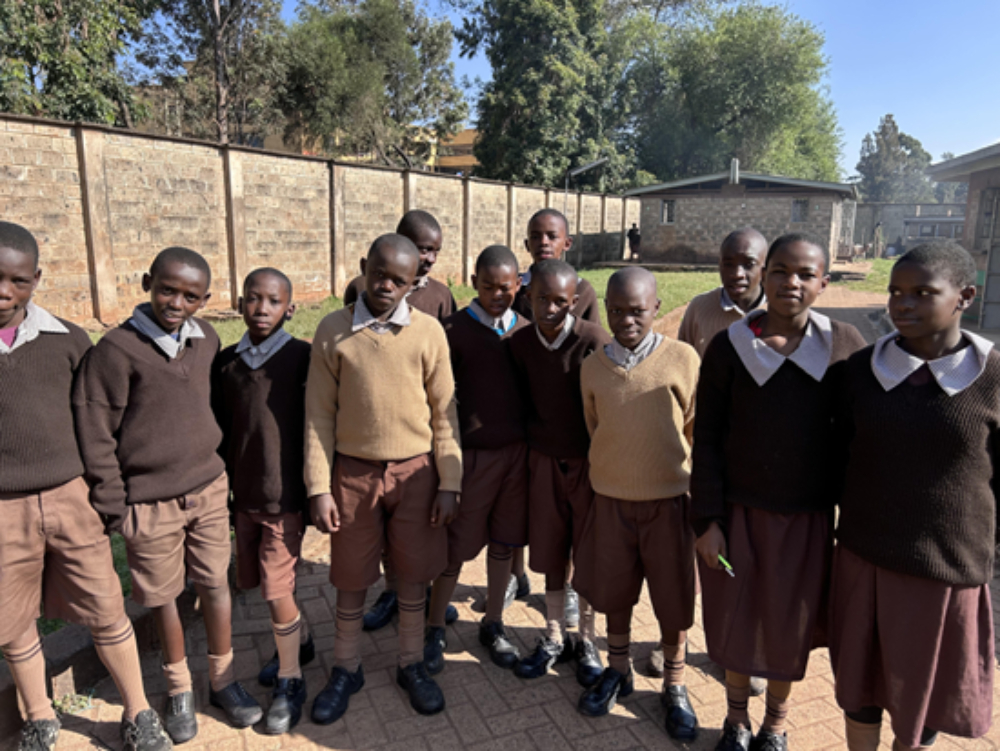
Students at the Amani School pose for a group photo. (Courtesy of Caroljean Willie)
In 1993, there was a great deal of hunger in Kenya. At that time, one of the sisters from the CPS community taught in a school for elementary age children in a neighborhood near their provincial house. Sr. Christine Masya, who was teaching in the school, was deeply concerned that students were fainting in the classroom due to lack of food. The community, with the support of their provincial Sr. Hildegardis Rothove, decided to start a feeding program for these children. Each day, the children would come to the convent to pick up lunch and return to the school.
However, as they walked back to the school, they were frequently attacked by street children who wanted their food. Children live on the streets for many reasons; some have run away from bad home situations, been deserted by their families or simply have no place to go during the day because a parent has to work and there is no money for school fees. So, gathering in the streets gives them a sense of belonging. The sisters realized that these children were also hungry, so they went to the streets to meet with them. They promised that if the street children would leave the school children alone, they, too, could come to the convent for food. Gradually, more and more children arrived at the convent doors for food but did not want to leave. An elderly Sister, Sr. Damiana Sattmann, began sitting with the children and told them stories, taught them their ABCs and shared with them how much God loved them.
A local social worker heard about what the sisters were doing and offered to help. She began asking questions about why the children were on the streets and what could be done to provide them a place of security and the opportunity for an education. Sr. Mary Paul Wamatu, who had taken over the provincial leadership at the time, met with the sisters to see what more they could do. They met with parents to see if their children could attend school if funding was made available. Most expressed gratitude and were most willing to have their children receive an education. The sisters solicited donations for the school fees for books and uniforms. Although public schools are technically free, students cannot attend unless they have uniforms and can pay for books and school supplies. The children were initially put into local schools, but it was difficult for the street children to fit into a regular classroom as they were so far behind others their age and were often ridiculed by other students. So, the sisters hired two teachers and began teaching the children on their grounds. The number of students soon outgrew the space available, so a new building was constructed housing grades one, two and three and offices for administrative purposes.
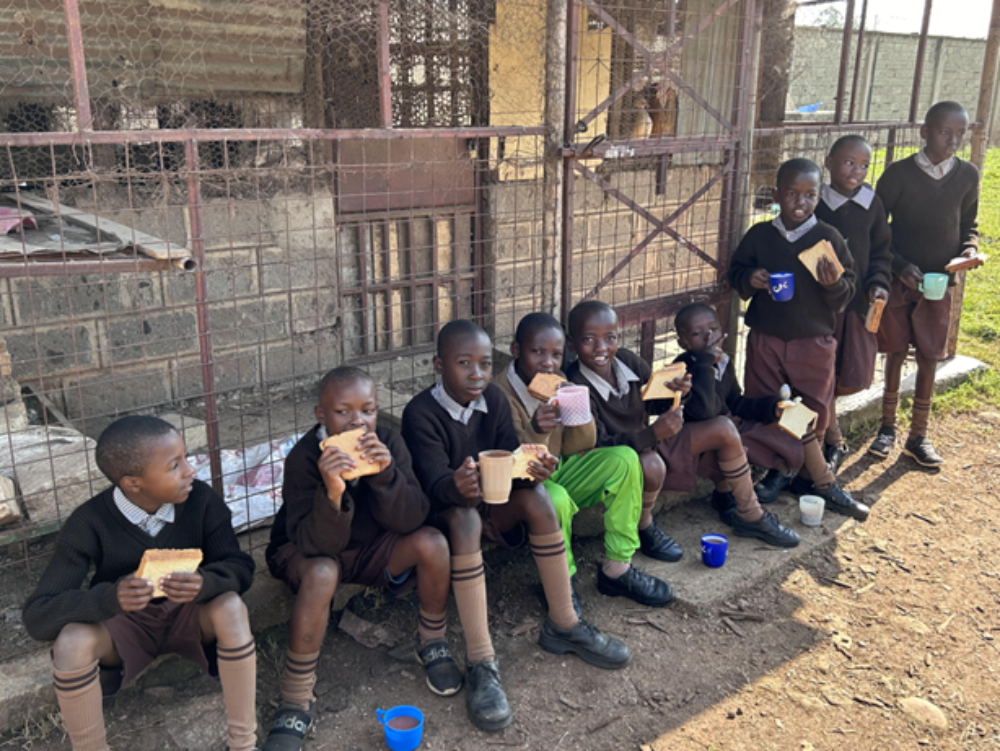
Amani School students eating (Courtesy of Caroljean Willie)
Donors heard of this new school for street children and began contributing towards its success. Eventually the school grew to include students from grades one to eight. The sisters and lay teachers continue to stay in contact with the families of the children and assess the families' needs. Today the school's services include social services, home visits, a feeding program, rehabilitation and counseling. Every day, the students are provided with breakfast, lunch and a snack before they go home. Some of the children were on the streets because they had been orphaned and had no family to care for them, so foster homes were found for them.
Today the school has 270 students who continue to have multiple needs. The teachers often go out to the streets themselves to find vulnerable students. I had the opportunity to work with Sr. Gladys Chelagat, the school administrator, and all of the teachers. They are an incredible group of dedicated, enthusiastic and hard-working young people. Their love for their students and the students for them was so apparent.
Depending on ability, when the students finish the eighth grade, the sisters help them enter trade schools and high schools, and continue to provide funding for school fees. Some former students have graduated from university too. A dream for the future is to be able to continue the Amani students' education through high school. Hundreds of children — those present in the school today and those who have graduated — continue to consider themselves part of the Precious Blood Children's Family.
Seeing a need and responding is part of the DNA of religious communities. The CPS community saw a need and responded with faith and prayer. Their commitment and generosity have provided a future filled with hope for hundreds of children.
Advertisement
I stayed with several CPS communities, where I was warmly welcomed and made to feel right at home. Daily Eucharist and prayer, accompanied by drumming and the kayamba, a local instrument, provided a blessed opportunity to share community and affirmed for me that this truly is one of the greatest gifts of religious life — to be at home in the world.

